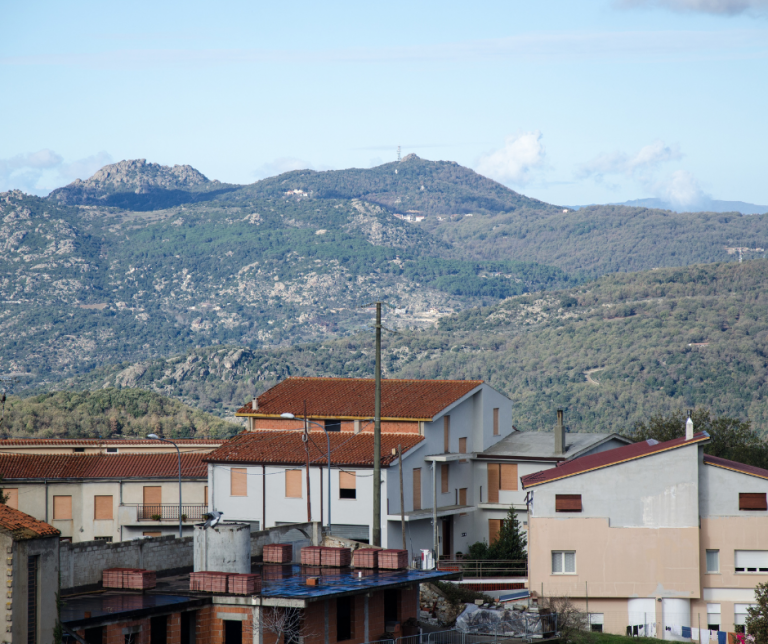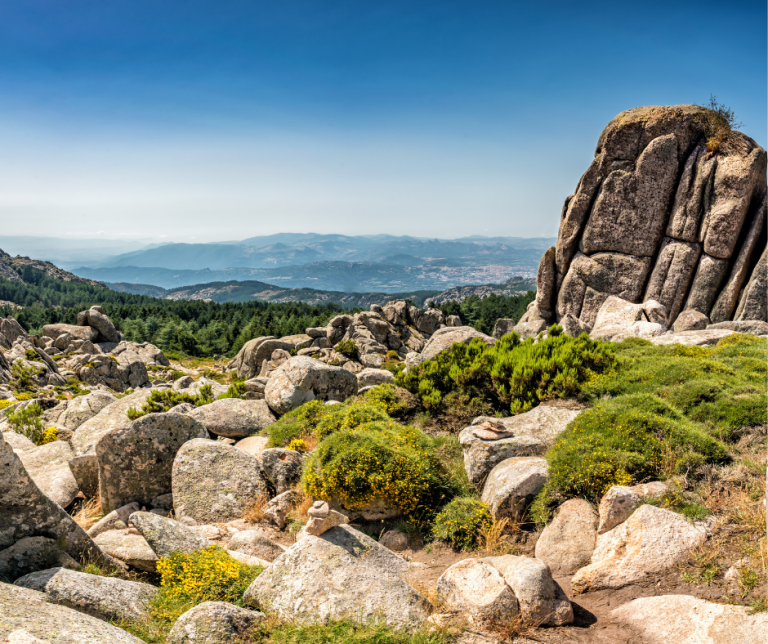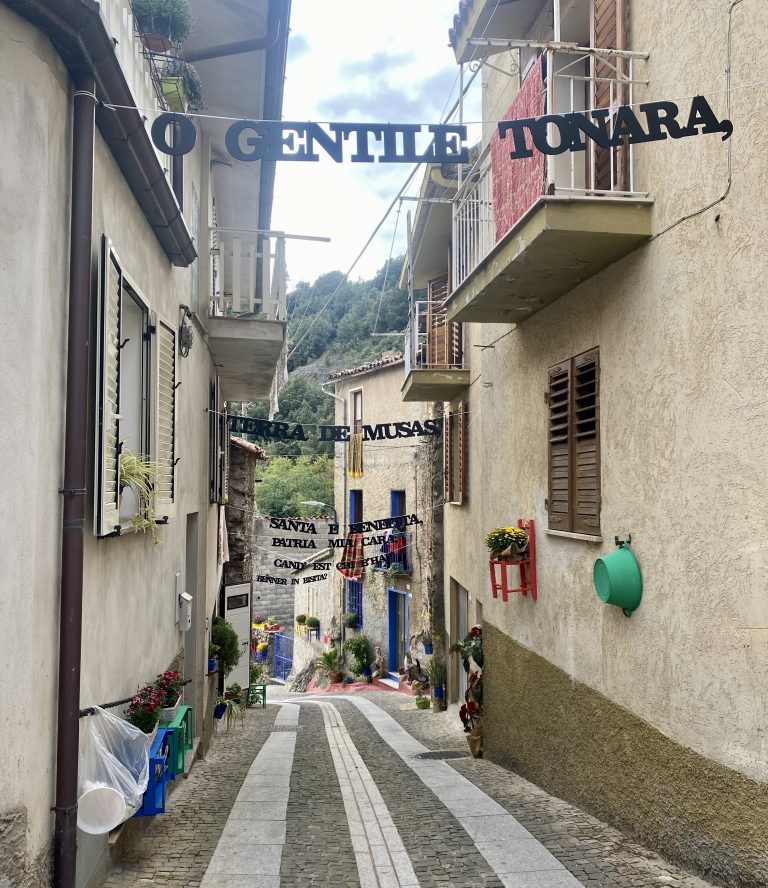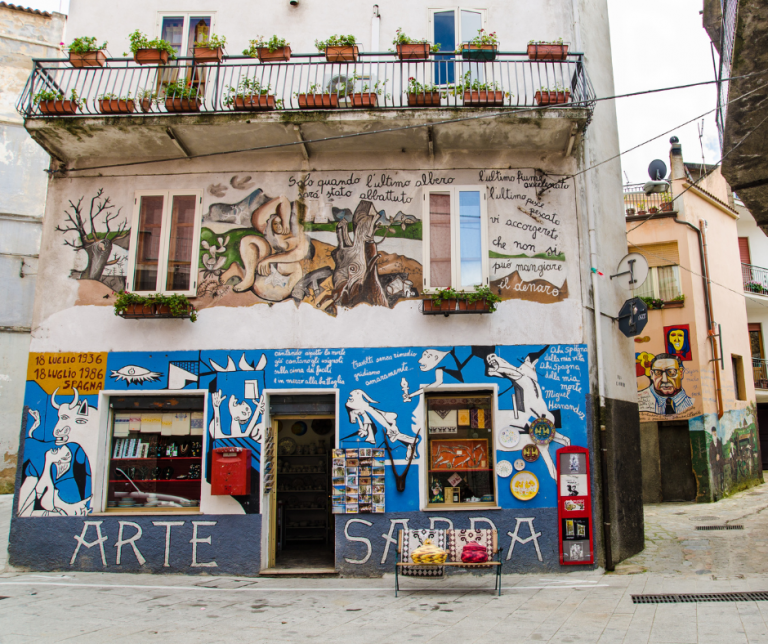We have mentioned it many times in our blog: Sardinia is not just a beach, sun and sea holiday destination. Of course, its transparent sea, shimmering in the most beautiful shades of green and blue, is one of the most beautiful in the world, but the island also has other equally impressive natural landscapes, such as its varied mountain world with its enchanting flora and fauna, perfect for hiking and trekking enthusiasts and offers some of the most amazing trails in Italy and Europe.
The mountains of Sardinia
Anyone who has crossed the island by car will remember the imposing mountains that line the highways, with names as melodious as Gennargentu, Supramonte, Monte Limbara and Monte Albo. In fact, an astonishing 80% of Sardinia is made up of mountains and plateaus. The highest mountain in Sardinia is the Gennargentu massif, with the highest peak in Sardinia, Punta La Marmora, at 1,834 metres. It is followed by the Supramonte di Oliena with Punta Corrasi at 1,463 metres and Monte Limbara, near Tempio Pausania, with Punta Sa Berritta at 1,362 metres. Its slopes are covered almost to the top with chestnut, oak, pine and fir trees.
The Gennargentu massif, which stretches some 20 to 30 km to the west of Arbatax in the interior of the island, is the heart of Barbagia: an ideal area for hiking, with paths running through beautiful cork oak woods, Mediterranean scrub, strawberry trees and oleander bushes. Sardinian deer, wild boar, wild cats, falcons, kites and black vultures also live here.
The imposing limestone massif of the Supramonte is located on the central east coast, essentially between Monte Limbara and Gennargentu, and stretches from Nuoro to Baunei (here you can also discover the Su Gologo plateau with the Voragine di Golgo, a fabulously deep karst hole). Well-known towns include Oliena, Orgosolo, Dorgali and Urzulei; it is considered the land of shepherds and once notorious bandits, and is also home to many endangered wild animals.
Sardinia’s mountains are a paradise for hiking ans trekking, characterised by lush vegetation and snow-capped peaks in winter, often dotted with small picturesque villages where time seems to stand still and life is different from the more well-known cities such as Cagliari, Alghero and Olbia and the popular seaside resorts such as Costa Smeralda, Budoni, Arbatax, Villasimius, Costa Rei, Chia, to name but a few.
If you would also like to discover these areas, here are five places to visit, whether for a short break or a relaxing holiday in the mountains.
Fonni, the highest village in Sardinia
Fonni is situated in Barbagia, among mountains and thick woods, and is the highest village in Sardinia, at 1,000 metres above sea level. Winters in Fonni are characterised by heavy snowfall, making its peaks, Bruncu Spina and Monte Spada, popular destinations for winter sports enthusiasts. Fonni is a pleasant village with a small historical centre where the typical houses are low and covered with scandulas (wooden tiles). The streets are decorated with beautiful murals depicting moments of daily life and local traditions. Walking through the village, you can visit the churches, the Basilica of the Martyrs and the Church of Santa Croce, as well as the Museum of Pastoral Culture, where the rural life of the past is presented. Fonni is also an excellent starting point for exciting walks in the Gennargentu, thanks to the beautiful nature that surrounds it.

Orgosolo, between trekking in the Supramonte and mural painting
Orgosolo is a small Sardinian town in the north of the island, considered the centre of mural painting in Sardinia. In the streets of the 620-metre-high town, more than 150 murals tell of world and socio-political events, of peasant and resistance struggles, but also of moments of simple life. Leaving Orgosolo, you enter the Supramonte, a mountain range characterised by unique natural landscapes with plateaus, overhangs, dense forests, caves and rocky peaks. It can be explored on foot, on rented mountain bikes, on horseback or in a 4×4. Some of the views will leave you speechless.
Monte Limbara, the mountain between Gallura and Logudoro
The terrain of Monte Limbara (roughly between San Teodoro and Castelsardo) is very different from the other mountains of Sardinia. Here you are surrounded by beautiful landscapes, vineyards, cork woods, monumental granite cliffs and, at the highest points, snow-covered peaks. Monte Limbara is the ideal place for those who want to hike in the north of the island. There are seven excellent itineraries, including “Punta Balistreri”, which leads to the summit and offers one of the most spectacular views on the island, and the “Animali e Piante” itinerary, which is more suitable for family outings, since at the end you reach a mouflon and fallow deer enclosure that will delight not only children.

Tonara: between nougat, tradition and nature
Tonara is a town in Barbagia, famous for its gastronomic speciality, the white and sweet torrone. The nougat is made from honey, dried fruit, nuts and egg whites according to traditional recipes and methods handed down from generation to generation. Tonara lies at the foot of Mungianeddu, surrounded by thick forests of chestnut, hazelnut and holm oak trees. In these woods there are fresh streams and small waterfalls. From the village there are several trails where you can explore the forests on foot, mountain bike or even on horseback. Mushroom pickers will also be in their element in this region, where the tasty black porcini mushroom grows.

Seui, the medieval village of Gennargentu
The landscape of Seui is like an Impressionist painting in which the colours alternate and are skilfully blended. Rocks, waterfalls, streams, holm oaks, cork oaks and conifers are home to an abundance of wildlife, including roe deer, fallow deer and the mythical golden eagle. Discover this marvellous natural environment by following one of the paths that wind through the rocks and woods, where you can admire not only nature but also prehistoric remains, such as the Nuraghe of Ardasai, which rises on the slopes of Monte Tonneri and is surrounded by the Barbagia’s various entrances. And if you don’t think you’re sporty enough, don’t worry, you can take the narrow-gauge Trenino Verde (the little green train) from Mandas in Sarcidano over the mountains to Seui and enjoy fantastic views. Seui lies at an altitude of 820 metres and has a population of around 1240. In the town you can visit the historic buildings Palazzina Liberty and Casa Museo Farci, where the politician and writer Filiberto Farci, co-founder of the Sardinian Action Party, lived.
Walking in the south of Sardinia
Hiking is also very popular in the south. Although there are no typical mountain villages like in the north-east, there are beautiful places that are certainly interesting as starting points for exciting excursions. The Giara di Gesturi plateau, about 70 km north of Cagliari, near Barumini and the Su Nuraxi World Heritage Site, is also a good place to take children on a hike, and is known as the ‘Carmargue of Sardinia’.
To the south and 30 km west of Cagliari, the Monte Arcosu forest area offers interesting day trips. At 3,600 hectares, it is the largest WWF oasis in Italy, created in 1985 by the WWF to protect the flora and fauna of the area, especially the endangered Sardinian deer. The entrance to the park is reached by a dirt road: four of the oasis’ seven circular walks, ranging in length from 2 to 24 km, start near the ticket office (please note: dogs are not allowed)
To the south-east, close to the Costa Rei, are the Sarrabus Mountains, with Monte dei Sette Fratelli, whose name – Mountain of the Seven Brothers – probably comes from the seven towering granite rocks that dominate the area, with cosy picnic areas and signposted walks. The 60,000-hectare forest reserve was established at the end of the 19th century as the island’s first state forest. Here, trekking and mountain biking enthusiasts can try out some of the colourfully signposted trails of varying degrees of difficulty. Part of the island is part of the Sentiero Italia, a 4,000-kilometre Italian walking trail that crosses the entire boot and its two largest islands.
Popular trekking and walking routes in Sardinia
Hiking enthusiasts have probably heard of the impressive Selvaggio Blu, the breathtaking trekking route that winds along the east coast of Sardinia. Known as the ‘Wild Blue’, it is one of the most extreme trekking routes in the world, with sometimes dizzying abseiling points on the sheer cliffs above the turquoise sea.
As a day trip, you can hike through the limestone gorge of Gola di Gorropu in the Supramonte mountains, in the municipalities of Urzulei and Orgosolo. The gorge is one of the deepest in Europe, with sheer walls up to 500 metres high. The path runs through woodland and is pleasantly cool even in the summer.
There are also a number of pilgrim trails in Sardinia that you can do on your own or with friends or family.
Tips for walking in Sardinia
- Spring, autumn and winter are certainly the best seasons for hiking, due to the more pleasant temperatures, and summer if the weather is good.
- Good equipment: hiking boots with a good grip, breathable and weatherproof clothing, sunglasses, hat/cap and enough water, food and sunscreen in your rucksack.
- The trails are generally well marked, but for safety reasons we recommend that you have a navigation or GPS device that you can download the routes onto, or a good map.
- We recommend authentic accommodation in the nearby towns, where you can stop off at traditional restaurants after the hike and enjoy the hearty local cuisine and Sardinian hospitality.
 it
it de
de nl
nl en
en fr
fr








